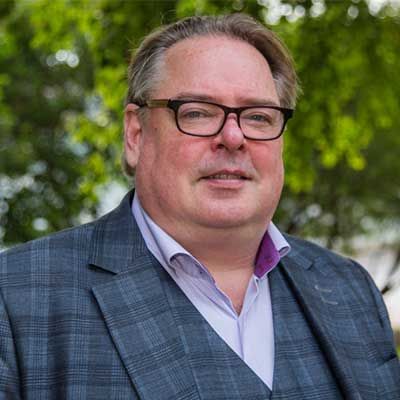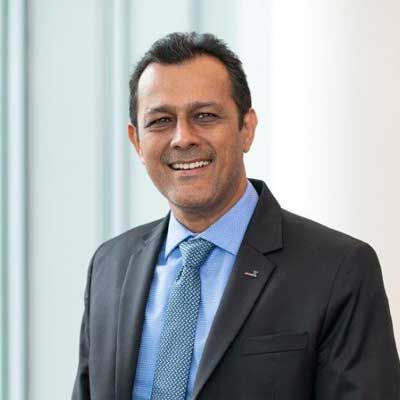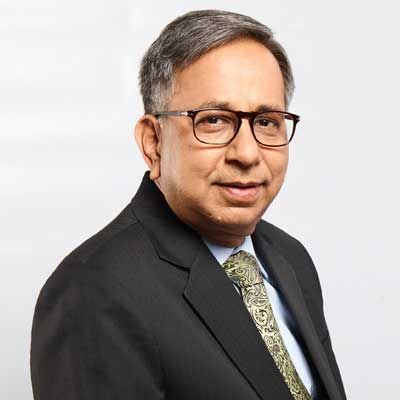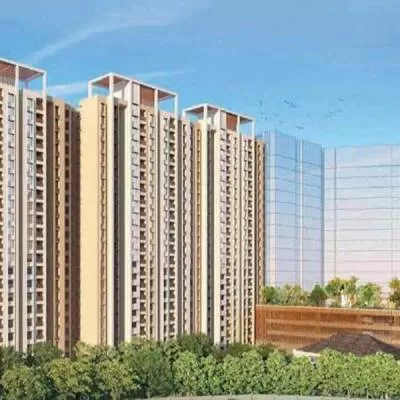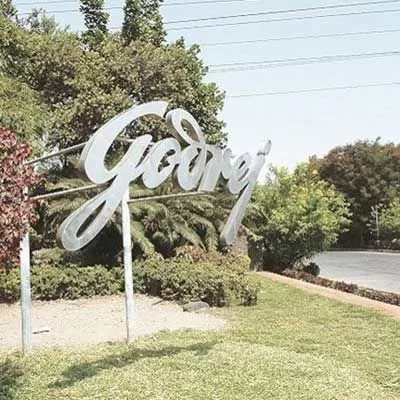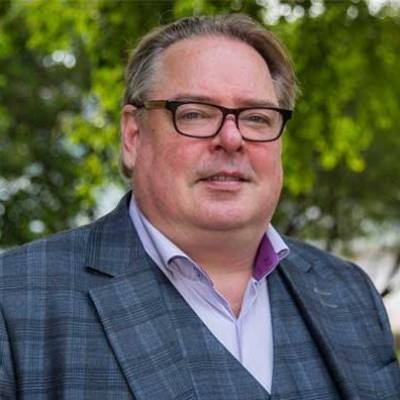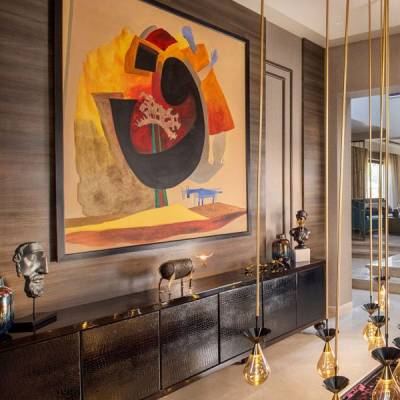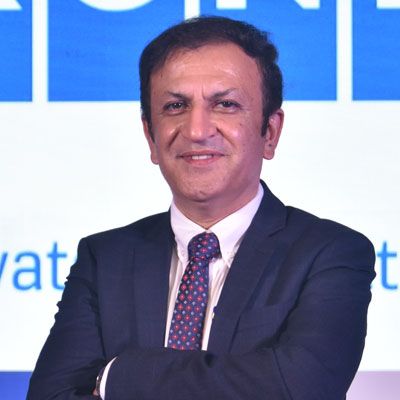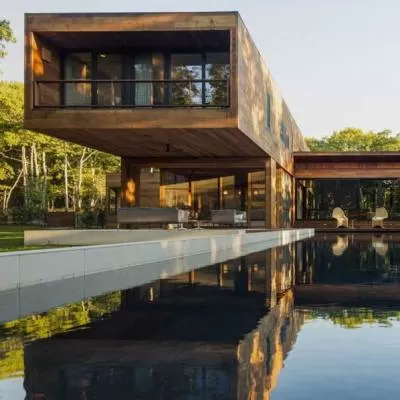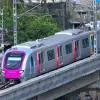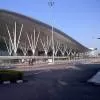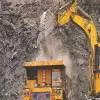- Home
- Real Estate
- Taking the initiative

Taking the initiative
"Being a civil engineer was my choice and I have enjoyed every bit of this activity," says P Surya Prakash, Founder Director, Satya Vani Projects and Consultants Pvt Ltd (SVPCPL) with pride. With over 28 years of experience, he continues to be driven by his agenda from training skilled labour and initiating an engineers' bill to advocating reforms in the civil engineering sector.
"The construction sector was not treated as an industry 20 years ago and the organised vs. unorganised ratio used to be 20:80," says Prakash, who began his career as a design engineer and moved on to being a consulting civil engineer. "However, this has changed for the better." But he rues the lack of skilled technical people in the field. "Civil engineering is a sector where you can mould people easily," he says. "But it continues to be a challenge to retain them owing to better takeoffs in other sectors."
For his part, Prakash, who began to use computerised design as early as 1987 and has developed a software for designing buildings himself, has stayed true to his metier. Recently appointed the national president of the Association of Consulting Civil Engineers (India), he is also member of the Expert Committee for Categorisation of Seismic Damaged Structures, founder president of PCES (now PSI) and an active member with various professional bodies like MIE, MICI, MIIBE, FACCE and MPSI. Prakash shares his perceptions and initiatives for the growth of the civil engineering sector:
Unskilled in focus
We have lost many skilled workers to Dubai and Singapore in the past decade and a half. The struggle for skilled labour has a direct impact on the final quality of the structure developed. The current economic scenario also has a key role to play. Compared to other countries, electricians, plumbers and carpenters are looked down upon in India. However, a clerk in an IT company who might just be entering the data card into the system is respected more because of the æIT' tag. We are losing many people to such jobs. In such a scenario, one alternative for the industry is mechanisation.
Technology take
Although there has not been a drastic change in technologies used, large-scale projects like roads and urban infrastructure are more mechanised these days. Technology needs to be cost-effective. If the issue of cost is resolved, I foresee a rapid change in the adaptation of new technologies in the next 10 years. For instance, we have shifted from cement floors to natural stone and vitrified tiles, and prefabricated structures for wall structures. Initially, PEB was a horizontal spread for industrial warehouses and buildings; now, these companies are trying to enter the vertical segment as well. However, for vertical development, precision in fabrication, erection and design for wind energy and horizontal load has become more critical. There has also been wide acceptance of precast concrete walls over the traditional column, beam and frame. Once the wall and slab system is accepted, the next step is changing from cast in-situ to precast. For the Gurgaon metro rail project, we designed the station using the precast technique. As Delhi is a high seismic zone, using precast construction was challenging. Pre-casting was done off-site and we completed the project faster with better aesthetics and caused less inconvenience to the people. In this way, we will eventually reduce our dependence on skilled workers on site.
Money matters
Today, build-ability matters the most in projects. When we did the value engineering for a 1.5-million-sq-ft building, we learnt that a steel building is more buildable. Ready-mix concrete (RMC) is more buildable compared to site-mix concrete. Ten years ago, RMC was very expensive because of volume and competition but today it is equally cost-effective. Any new industrialised technology, whether it is a steel building or a green unit, will eventually become cost-effective when people start using it. Hence, industrialisation cost goes down with volume, volume is a result of acceptance, and acceptance comes with value engineering.
Cloud computing and shareware
This has been one point on my agenda. Software products like AutoCAD are very expensive for any firm to deploy. Civil engineers who have a turnover of Rs 50 lakh to Rs 1 crore a year have to invest Rs 20-25 lakh in software. This becomes an unviable proposition. So, new technologies in computing like shareware and cloud computing for analysing and detailing software or knowledge process outsourcing prove beneficial.
Green energy
We cannot just go green for the sake of a rating. I have been personally involved in green construction for the past six to seven years. In India, we are green by tradition and culture. In my ancestral home, we had a composting yard in the backyard. Today we have a recycling system and composting system in the name of organic farming.
To conserve water, in a 1-lakh-sq-ft apartment, I initiated a sewage treatment plant; residents now get water at a cost of less than 1 paisa per litre. Along with energy and water conservation measures, solar heating is a vital concept that can save a lot of energy but needs to be designed properly. I have suggested net metering and dual tariff to encourage solar power. Efforts are being put in to implement net metering in Andhra Pradesh and dual tariff has come into force to encourage adoption of solar power.
Reforms for civil engineering
In our country, the word æengineer' is not recognised by law or the constitution. The only three sections where it is used are in the All India Council for Technical Education, which gives accreditation of engineering colleges; the National Building Code, which defines an engineer and structural engineer; and the Institution of Engineers, which was formed before independence. Otherwise, we have an architect bill, but nothing for engineers. After the Gujarat earthquake in 2001, the then union urban minister announced that an engineers' bill would be introduced in the winter session. However, this never saw the light of day and it was eventually passed onto human resource development minister Kapil Sibal. He took it further and the bill was framed. It was circulated amongst seven connected ministries but when it reached the final drafting stage, the file was closed once again. The reason: as there is an Institute of Engineers, why an engineers' bill? At times, an engineer also fails in his job and, in many instances, PILs are filed in court. But despite professional misconduct, an engineer cannot be penalised because an engineering fault cannot be proved as an engineer is not defined in our constitution. Hence, we need a bill that identifies and categorises engineers into a minimum of four categories: geotechnical engineer, structural engineer, construction engineer, and proof consultant or peer review consultant. This is what I have been advocating. With the bill, these categories can be licensed and performances reviewed. Another call for reform is in the area of procurement. We don't have a uniform schedule of rates and prequalification criteria. There is a need for a uniform procurement document rationalising the services of the consulting engineer.
Track Record
P Surya Prakash
Academic
-
Post Graduate in MS structures from IIT Madras
Professional
- Founder Director of Satya Vani Projects and Consultants
- National President of Association of Consulting Civil Engineers (India)
- Member expert committee for categorisation of seismic damaged structures
- Founder president of PCES, now (PSI), in 2013
- Guest training faculty to CERI, ESCI, Hyderabad, in CAD of T/L Towers
- Guest faculty for QIP workshops in JNTU School of Planning
Awards
-
ACCE-CDC Best Software award for CABFADD in year 2007
Challenge zone
Project 1
Project: Design of a state-of-the-art, 250-seat auditorium
Period: 2002
Cost: Rs 10 crore
Client: Satyam Computer Services Ltd, Hyderabad (now Tech Mahindra)
Background: The client decided to organise an international summit in Hyderabad to connect 250 attending delegates with technology partners in 10 countries. There was no such facility readily available in Hyderabad. With 90 days to go, the decision was made to plan a 250-seat auditorium along with boarding and lodging facilities. The time available and planned for construction, including shell and core, finishes, interiors and AV installation with MEP, was 60 days.
Solution: We decided to adopt PEB for all structural elements and even the stepped flooring. The roof was shaped like a fish belly, which was challenging with the available profiles those days. Even the toilet block was done using steel structure and permanent decking for roof with RCC to avoid cycle time for finishing. The AV room was completely done using steel frames and Aerocon panels. The stepped flooring was the last activity in constructing the auditorium as mobile stools were used for ceiling services and false ceiling. To crash schedule for the activity, we decided to have a pre-engineered steel frame with a pre-cut Aerocon panel for the floor base. All these were successfully implemented and the project was completed in 59 days with one day left for a trial run of the systems.
PROJECT 2
Project: Design of six stations for metro rail at Gurgaon RMRG for IERS
Period: 2009-2012
Cost: Rs 50 crore
Client: Maytas Infra Ltd, Hyderabad (Now IL&FS Engineering Co Ltd)
Background: The allocated budget and time available for completing the project were limited. In addition, the architectural features of the stations had to be in tune with the overall urban landscape of the city. The station architect and urban architect were to approve the concept at the pre-bidding stage itself. The contract was on the design-build model. Initially, at the pre-bid stage, the structure was designed as cast in-situ concrete in flat slab and beam column system.
Solution: It was agreed by all the parties to modify the system to pre-cast concrete floor deck erected on cast in-situ concrete frames. With the location being in seismic zone-4 and foundations in deep piles with fully submerged condition, all the stations' precast elements had to be standardised. For diaphragm action, the precast girders were connected structurally with in-situ concrete along with the main frame beams.
Challenges: Single-level stations could be executed without any change. But in the stations where the concourse and platform were at different levels, the second level precast could not be planned for erection as the availability of cranes and their cost were not viable. Hence, such platform levels were modified to cast in-situ with the centre supported on pre-cast deck.
In the next in a series of interviews with prominent civil engineers, SHRIYAL SETHUMADHAVAN speaks to P Surya Prakash, Founder Director, Satya Vani Projects and Consultants Pvt Ltd. Being a civil engineer was my choice and I have enjoyed every bit of this activity, says P Surya Prakash, Founder Director, Satya Vani Projects and Consultants Pvt Ltd (SVPCPL) with pride. With over 28 years of experience, he continues to be driven by his agenda from training skilled labour and initiating an engineers' bill to advocating reforms in the civil engineering sector. The construction sector was not treated as an industry 20 years ago and the organised vs. unorganised ratio used to be 20:80, says Prakash, who began his career as a design engineer and moved on to being a consulting civil engineer. However, this has changed for the better. But he rues the lack of skilled technical people in the field. Civil engineering is a sector where you can mould people easily, he says. But it continues to be a challenge to retain them owing to better takeoffs in other sectors. For his part, Prakash, who began to use computerised design as early as 1987 and has developed a software for designing buildings himself, has stayed true to his metier. Recently appointed the national president of the Association of Consulting Civil Engineers (India), he is also member of the Expert Committee for Categorisation of Seismic Damaged Structures, founder president of PCES (now PSI) and an active member with various professional bodies like MIE, MICI, MIIBE, FACCE and MPSI. Prakash shares his perceptions and initiatives for the growth of the civil engineering sector: Unskilled in focus We have lost many skilled workers to Dubai and Singapore in the past decade and a half. The struggle for skilled labour has a direct impact on the final quality of the structure developed. The current economic scenario also has a key role to play. Compared to other countries, electricians, plumbers and carpenters are looked down upon in India. However, a clerk in an IT company who might just be entering the data card into the system is respected more because of the æIT' tag. We are losing many people to such jobs. In such a scenario, one alternative for the industry is mechanisation. Technology take Although there has not been a drastic change in technologies used, large-scale projects like roads and urban infrastructure are more mechanised these days. Technology needs to be cost-effective. If the issue of cost is resolved, I foresee a rapid change in the adaptation of new technologies in the next 10 years. For instance, we have shifted from cement floors to natural stone and vitrified tiles, and prefabricated structures for wall structures. Initially, PEB was a horizontal spread for industrial warehouses and buildings; now, these companies are trying to enter the vertical segment as well. However, for vertical development, precision in fabrication, erection and design for wind energy and horizontal load has become more critical. There has also been wide acceptance of precast concrete walls over the traditional column, beam and frame. Once the wall and slab system is accepted, the next step is changing from cast in-situ to precast. For the Gurgaon metro rail project, we designed the station using the precast technique. As Delhi is a high seismic zone, using precast construction was challenging. Pre-casting was done off-site and we completed the project faster with better aesthetics and caused less inconvenience to the people. In this way, we will eventually reduce our dependence on skilled workers on site. Money matters Today, build-ability matters the most in projects. When we did the value engineering for a 1.5-million-sq-ft building, we learnt that a steel building is more buildable. Ready-mix concrete (RMC) is more buildable compared to site-mix concrete. Ten years ago, RMC was very expensive because of volume and competition but today it is equally cost-effective. Any new industrialised technology, whether it is a steel building or a green unit, will eventually become cost-effective when people start using it. Hence, industrialisation cost goes down with volume, volume is a result of acceptance, and acceptance comes with value engineering. Cloud computing and shareware This has been one point on my agenda. Software products like AutoCAD are very expensive for any firm to deploy. Civil engineers who have a turnover of Rs 50 lakh to Rs 1 crore a year have to invest Rs 20-25 lakh in software. This becomes an unviable proposition. So, new technologies in computing like shareware and cloud computing for analysing and detailing software or knowledge process outsourcing prove beneficial. Green energy We cannot just go green for the sake of a rating. I have been personally involved in green construction for the past six to seven years. In India, we are green by tradition and culture. In my ancestral home, we had a composting yard in the backyard. Today we have a recycling system and composting system in the name of organic farming. To conserve water, in a 1-lakh-sq-ft apartment, I initiated a sewage treatment plant; residents now get water at a cost of less than 1 paisa per litre. Along with energy and water conservation measures, solar heating is a vital concept that can save a lot of energy but needs to be designed properly. I have suggested net metering and dual tariff to encourage solar power. Efforts are being put in to implement net metering in Andhra Pradesh and dual tariff has come into force to encourage adoption of solar power. Reforms for civil engineering In our country, the word æengineer' is not recognised by law or the constitution. The only three sections where it is used are in the All India Council for Technical Education, which gives accreditation of engineering colleges; the National Building Code, which defines an engineer and structural engineer; and the Institution of Engineers, which was formed before independence. Otherwise, we have an architect bill, but nothing for engineers. After the Gujarat earthquake in 2001, the then union urban minister announced that an engineers' bill would be introduced in the winter session. However, this never saw the light of day and it was eventually passed onto human resource development minister Kapil Sibal. He took it further and the bill was framed. It was circulated amongst seven connected ministries but when it reached the final drafting stage, the file was closed once again. The reason: as there is an Institute of Engineers, why an engineers' bill? At times, an engineer also fails in his job and, in many instances, PILs are filed in court. But despite professional misconduct, an engineer cannot be penalised because an engineering fault cannot be proved as an engineer is not defined in our constitution. Hence, we need a bill that identifies and categorises engineers into a minimum of four categories: geotechnical engineer, structural engineer, construction engineer, and proof consultant or peer review consultant. This is what I have been advocating. With the bill, these categories can be licensed and performances reviewed. Another call for reform is in the area of procurement. We don't have a uniform schedule of rates and prequalification criteria. There is a need for a uniform procurement document rationalising the services of the consulting engineer. Track Record P Surya Prakash Academic Post Graduate in MS structures from IIT Madras Professional Founder Director of Satya Vani Projects and Consultants National President of Association of Consulting Civil Engineers (India) Member expert committee for categorisation of seismic damaged structures Founder president of PCES, now (PSI), in 2013 Guest training faculty to CERI, ESCI, Hyderabad, in CAD of T/L Towers Guest faculty for QIP workshops in JNTU School of Planning Awards ACCE-CDC Best Software award for CABFADD in year 2007 Challenge zone Project 1 Project: Design of a state-of-the-art, 250-seat auditorium Period: 2002 Cost: Rs 10 crore Client: Satyam Computer Services Ltd, Hyderabad (now Tech Mahindra) Background: The client decided to organise an international summit in Hyderabad to connect 250 attending delegates with technology partners in 10 countries. There was no such facility readily available in Hyderabad. With 90 days to go, the decision was made to plan a 250-seat auditorium along with boarding and lodging facilities. The time available and planned for construction, including shell and core, finishes, interiors and AV installation with MEP, was 60 days. Solution: We decided to adopt PEB for all structural elements and even the stepped flooring. The roof was shaped like a fish belly, which was challenging with the available profiles those days. Even the toilet block was done using steel structure and permanent decking for roof with RCC to avoid cycle time for finishing. The AV room was completely done using steel frames and Aerocon panels. The stepped flooring was the last activity in constructing the auditorium as mobile stools were used for ceiling services and false ceiling. To crash schedule for the activity, we decided to have a pre-engineered steel frame with a pre-cut Aerocon panel for the floor base. All these were successfully implemented and the project was completed in 59 days with one day left for a trial run of the systems. PROJECT 2 Project: Design of six stations for metro rail at Gurgaon RMRG for IERS Period: 2009-2012 Cost: Rs 50 crore Client: Maytas Infra Ltd, Hyderabad (Now IL&FS Engineering Co Ltd) Background: The allocated budget and time available for completing the project were limited. In addition, the architectural features of the stations had to be in tune with the overall urban landscape of the city. The station architect and urban architect were to approve the concept at the pre-bidding stage itself. The contract was on the design-build model. Initially, at the pre-bid stage, the structure was designed as cast in-situ concrete in flat slab and beam column system. Solution: It was agreed by all the parties to modify the system to pre-cast concrete floor deck erected on cast in-situ concrete frames. With the location being in seismic zone-4 and foundations in deep piles with fully submerged condition, all the stations' precast elements had to be standardised. For diaphragm action, the precast girders were connected structurally with in-situ concrete along with the main frame beams. Challenges: Single-level stations could be executed without any change. But in the stations where the concourse and platform were at different levels, the second level precast could not be planned for erection as the availability of cranes and their cost were not viable. Hence, such platform levels were modified to cast in-situ with the centre supported on pre-cast deck.


